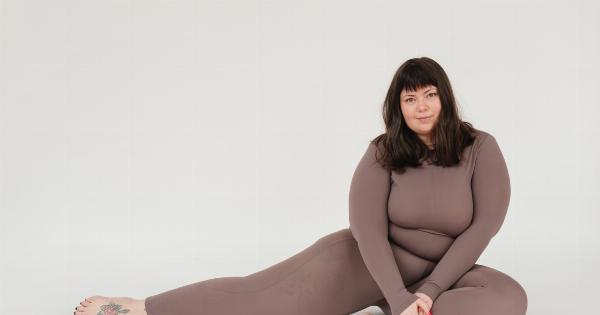Stretch marks are indented streaks or bands that crisscross the skin. They occur when your skin cannot keep up with the biological events that cause growth or rapid weight gain. The technical name for these marks, which look like stripes, is striae.
They are an incredibly common issue that impacts millions of people worldwide, both men and women. Striae mostly occur on the abdomen, upper arms, breasts, buttocks, and thighs. They are a cosmetic issue that is neither harmful nor painful.
How Stretch Marks form?
Stretch marks are formed when the skin is excessively stretched. When you gain weight rapidly or go through a growth spurt, your skin may not readily accommodate the change due to a collagen imbalance in the dermis layer.
This causes a break in the elastic fibers situated under the surface of the skin, which results in the narrow streaks or lines. They start out as pink or purple, and over time transform into light-colored streaks or bands. For some people, stretch marks fade with time, for others, they can be permanent.
Types of Stretch Marks
There are five main types of striae.
: 1. Linea Albicantia
They appear as white streaks on the breast, hips, abdomen, and buttocks. Linea Albicantia is common in women who experienced rapid weight gain during pregnancy.
: 2. Striae Atrophicans
These are common among bodybuilders, people who use steroids, and those with Cushing’s Syndrome. Striae Atrophicans are purple or red when they first appear, but turn into white or yellowish strips over time.
: 3. Striae Gravidarum
These are common in women who are pregnant. Striae Gravidarum occurs when the skin expands rapidly. They are typically found on the abdomen, buttocks, thighs, and breasts.
: 4. Striae Rubra
They are commonly found on the upper arms, abdomen, thighs, and lower back. Striae Rubra may be red, purple, or pink in color.
: 5. Striae Nigra
They are mainly found in dark-skinned individuals. Striae Nigra is typically black or brown and occur on the abdomen area.
What Causes Stretch Marks?
Stretch marks are generally a result of the skin being stretched excessively over a short period of time. Some of the most common reasons for this include:.
: 1. Pregnancy
Striae gravidarum usually occurs in women during the third trimester of pregnancy when weight gain increases significantly, often within a short period.
: 2. Bodybuilding
When bodybuilders gain muscle mass quickly, the skin cannot stretch to cope, resulting in a rupture in the elastic fibers.
: 3. Weight Gain or Weight Loss
Stretch marks arise when the skin stretches quickly due to weight gain or rapid weight loss.
: 4. Puberty
During puberty, rapid growth can cause striae to form.
: 5. Steroid Use
Steroids interfere with the normal process of collagen production and cause the skin to thin. Thin skin is more likely to rupture under the strain of a quick expansion or contraction, leading to stretch marks.
Is there any Relationship between Stretch Marks and Cancer?
Stretch marks and cancer are two disparate conditions with nothing in common. There is no causal link between the two. Stretch marks are not a symptom of cancer and are not caused by cancer. Striae do not increase the risk of cancer in any way.
Some people still believe that stretch marks signify cancer, but it is merely a myth.
Can Stretch Marks be a Sign of Cancer?
Stretch marks are never a sign of cancer. They are a cosmetic issue that is not in any way related to cancer.
As previously mentioned, stretch marks develop when the skin stretches beyond its capacity due to hormonal changes, pregnancy, weight gain, or an intense workout program. They are only related to weight or muscle gain rather than cancer.
How Can You Treat Stretch Marks?
They are no medical reasons that you should seek treatment for stretch marks. There is no therapy, medication, or surgical option to permanently remove stretch marks. However, the following options may improve the visibility of stretch marks.
: 1. Retinoids
Retinoids are derivatives of Vitamin A and help to improve the appearance of stretch marks. Tretinoin, in particular, is an active ingredient used in many skincare lotions to lessen the appearance of striae.
: 2. Laser therapy
Laser therapy is a non-invasive treatment that involves using light beams to target stretch marks that sit underneath the skin’s surface. The light beams stimulate the production of collagen, which improves the appearance of stretch marks.
: 3. Microdermabrasion
Microdermabrasion is another cosmetic procedure used to diminish stretch marks. It involves exfoliating the outer layer of skin, making way for new, healthy skin cells to appear.
: 4. Moisturizers
Vitamin E or Glycolic acid-based moisturizers or oils help to hydrate the skin, which in turn, helps to improve the look of stretch marks.
The Bottom Line
Stretch marks are harmless, and they are not linked to cancer in any way. Stretch marks develop due to hormonal changes, weight gain, pregnancy, puberty, or even an intense workout regimen.
Some treatments can lessen the appearance of stretch marks, but they are by no means a potent fix. Stretch marks can fade on their own over time or become permanent skin markers. They may seem like something you should hide away, but remember that stretch marks are commonplace, and most people will get them at some point in their life.























